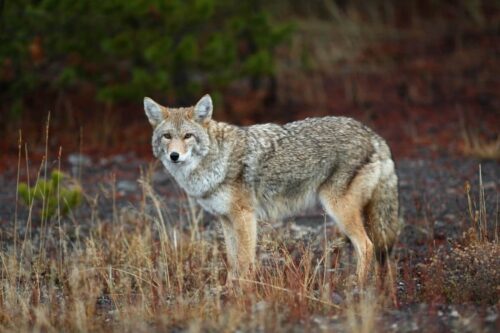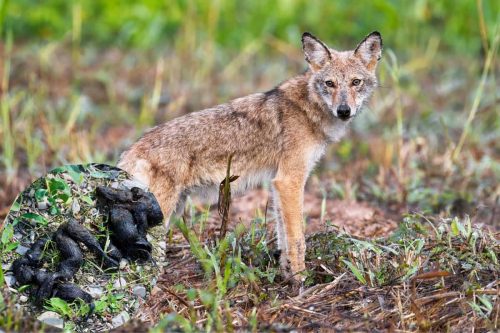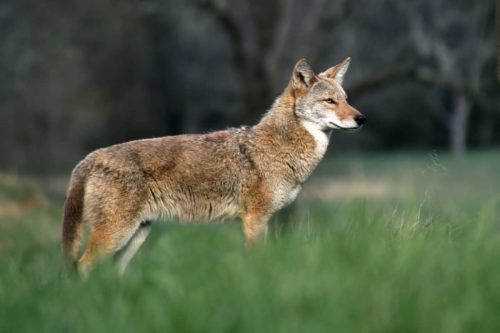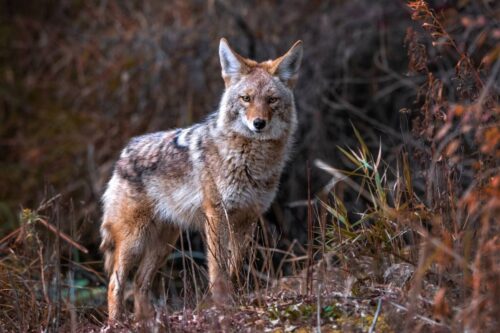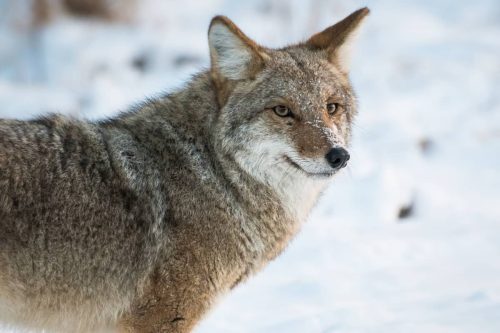Do Coyotes Hibernate Or Migrate In The Winter? (Find The Truth)
Most wild animals usually hibernate in the winter months due to the decline of their food sources. These animals take extra calories and put on more fats before the winter months come. Many people are curious about the hibernation of coyotes. They occasionally raise the question that do coyotes hibernate? In this article, we are going to answer this question in detail and will let you know everything about the hibernation or migration of coyotes.
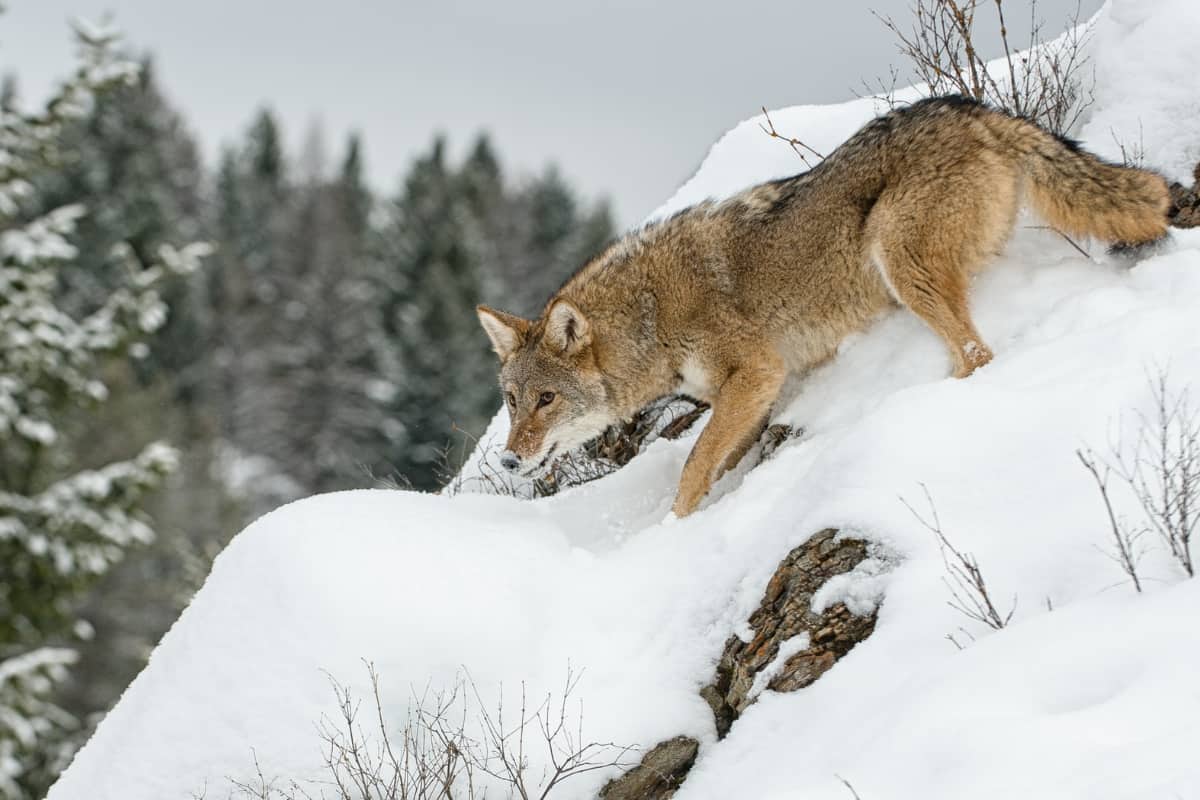
Contents
- Do coyotes hibernate in the winter?
- Do coyotes migrate in the winter?
- What do coyotes do in the winter?
- How do coyotes survive in the winter months?
- What is the most active time of the coyote?
- Other active animals in the winter
- How does a juvenile coyote survive in the winter?
- Does coyote sleep all winter?
- Conclusion
Do coyotes hibernate in the winter?
In simple words, coyotes don’t hibernate in the winter. In winter months, coyotes usually like to stay in their home range. These animals don’t hibernate due to some fundamental reasons. First of all, these animals have enough sources of food throughout the winter months that can easily keep them alive throughout the winter month.
Secondly, they also shed their summer coat before the arrival of winter months and have very thick and heavy fur which keeps them warm throughout the winter months. Thirdly, coyotes are also very social animals and like to hunt in groups. In the winter, they especially go for a hunt in packs and they can easily take down large animals like deer even if small animals like rabbits, mice and rodents are not available.
Coyotes usually stick together for hunting in the harsh winter weather and disperse back when the summer comes back. It makes the family bond very strong as they do most of their activities together in this harsh weather.
Do coyotes migrate in the winter?
No, coyotes don’t migrate in the winter because they can easily meet most of the needs within their territorial range. They could easily generate enough food sources in their home territorial range that they don’t need to go anywhere. The coat of the coyote is also highly adaptable which helps them survive in any kind of weather.
Coyotes are also highly territorial animals and if they leave their territory for any reason then it might be very difficult for them to gain back their territory without having any fierce battle. Adult coyote may not leave their territory or migrate very easily but young coyotes may stay with the pack for some time and then go on their own way in search of their own permanent territory for mating purposes.
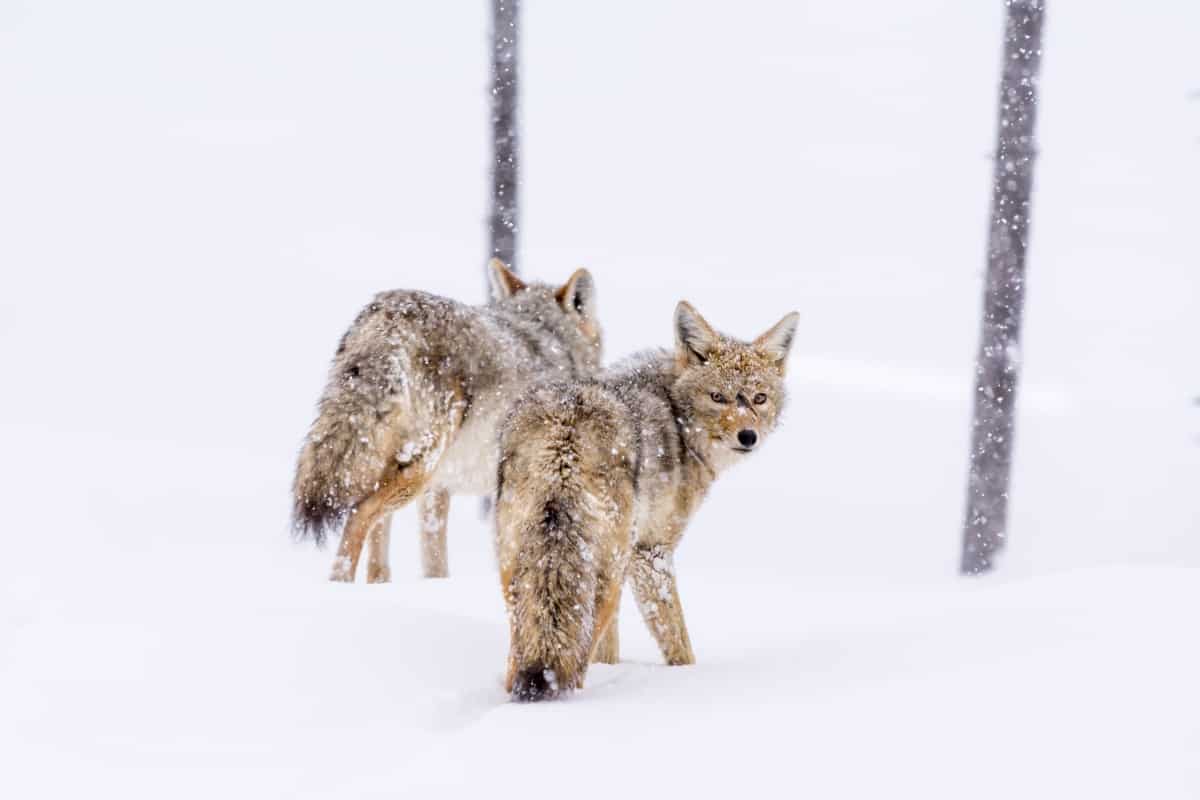
Coyotes don’t migrate because they also have very flexible dietary needs. They can easily rely on nuts, seeds, fruits and grasses if they could not find small mammals. Generally, the home territorial range of the coyote lies between 10 to 16 square miles. Male coyotes cover more areas than their female counterparts.
What do coyotes do in the winter?
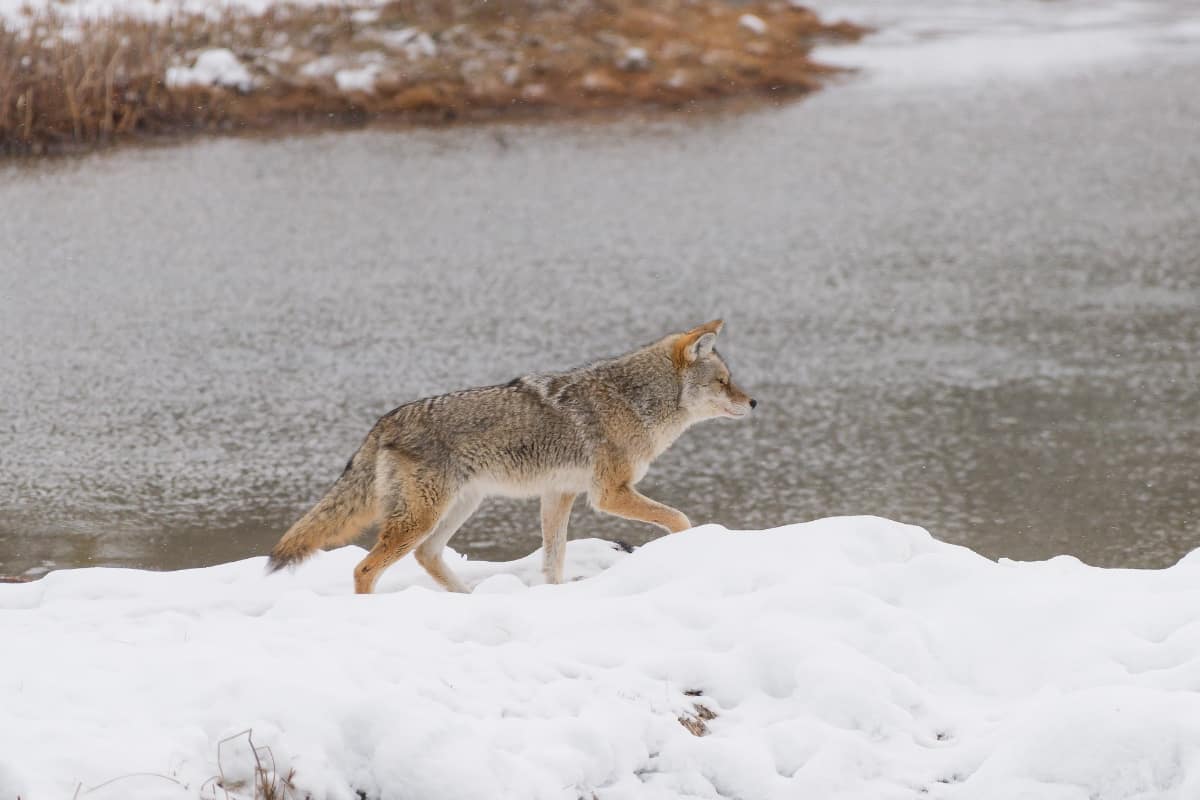
In winter months, coyotes have to reduce their daily routine activities due to the harsh weather outside. However, still they need to fulfil certain dietary needs as they need to consume at least 2 to 3 pounds of meat every day for the maintenance of their health. They can only survive 36 hour gap between their eating. It means they still have to hunt for food. For this purpose, they must come outside. Indeed, coyotes don’t migrate in the winter.
However, they might shift their home or den from one area to another where they can easily meet their dietary needs. They also shift their home if there is a lot of very deep snow outside their incumbent home. The snow might be advantageous for the coyote if it comes in a crusted form. In this case, a coyote can easily move from one place to another and can even catch some bigger prey like deer quite easily.
Coyotes’ hunting of deer increases two times on the crusted snow as compared to summertime. This type of snow is also highly beneficial for the hunting of small mammals like mice and voles. For this purpose, first of all, they sense these rodents’ exact location with the help of their excellent hearing sense. After that, they dive into the snow and catch their prey.
How do coyotes survive in the winter months?
As we have already mentioned that the coyote doesn’t hibernate or migrate. Nevertheless, they do certain things for their long-term survival in the winter months. Let’s have a look at these survival methods of the coyote in the winter.
Anatomical Adaptations
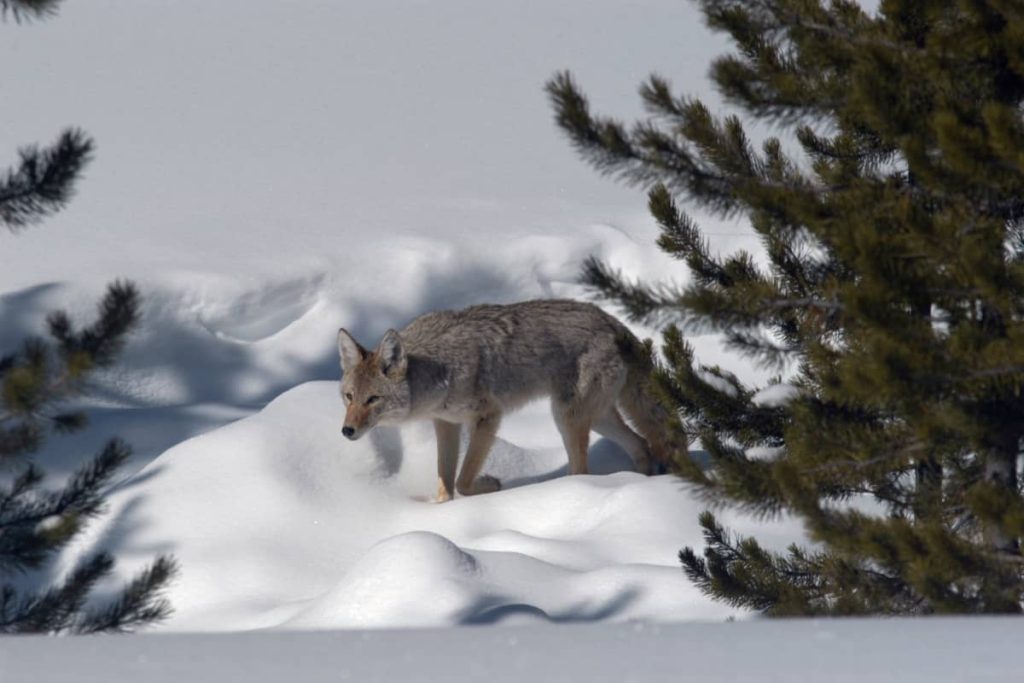
The winter coat is the most important anatomical adaptation coyotes adopt in the winter month. It usually comes with two layers of fur same as other animals like foxes, wolves and beavers. The fluffy unfurl traps the residual air and become warm from the heat of the coyote’s body. They make an impermeable membrane in between their fur which doesn’t let the heat pass and keeps them under warmth.
Coyote’s coat cover is so long and thick that it covers all the body parts except the nose and pads. The thickness of the coat is such that the coyote can easily travel and survive in the snow. They can stay outside throughout the winter months. Coyote also increases their food intake for getting excessive fat which they consume in the winter months. This extra fat provides them warmth and sustenance at the same time.
Dietary patterns
Coyote also changes their dietary patterns in the winter months. Being opportunistic hunters, they can rely on any kind of available source of food in their territory. In the winter, they also adopt scavenger behaviour. In other months, coyotes generally prefer to eat small mammals like rodents, mice, rabbits, etc. However, they shift their dietary pattern from small to big animals like deer as the winter comes.
Usually, they face the scarcity of small mammals in the winter months and they divert their food towards big animals like deer. They also do this activity in the form of packs or social groups. In the harsh winter months, they don’t even leave the deer carcass left by any other predator. Moreover, coyote also comes with very strong jaw and sharp teeth which could even tear apart frozen flesh.
Other than this, a coyote can also rely on vegetation and animals like red foxes, and cats in winter. All of these adaptations are highly helpful for the long-term survival of coyotes even if the temperature drops below 30 °F.
What is the most active time of the coyote?
Generally, coyotes remain active throughout the year but the mating season is considered the most active for the coyote. Coyote makes a lot of movement at this time in search of a proper mate for them. They make a lot of yelps, howls and yips for active communication with their counterparts. The months of the mating season are February and March but the movement will increase much earlier. They both mate and expand their territorial range in these months.
Other active animals in the winter
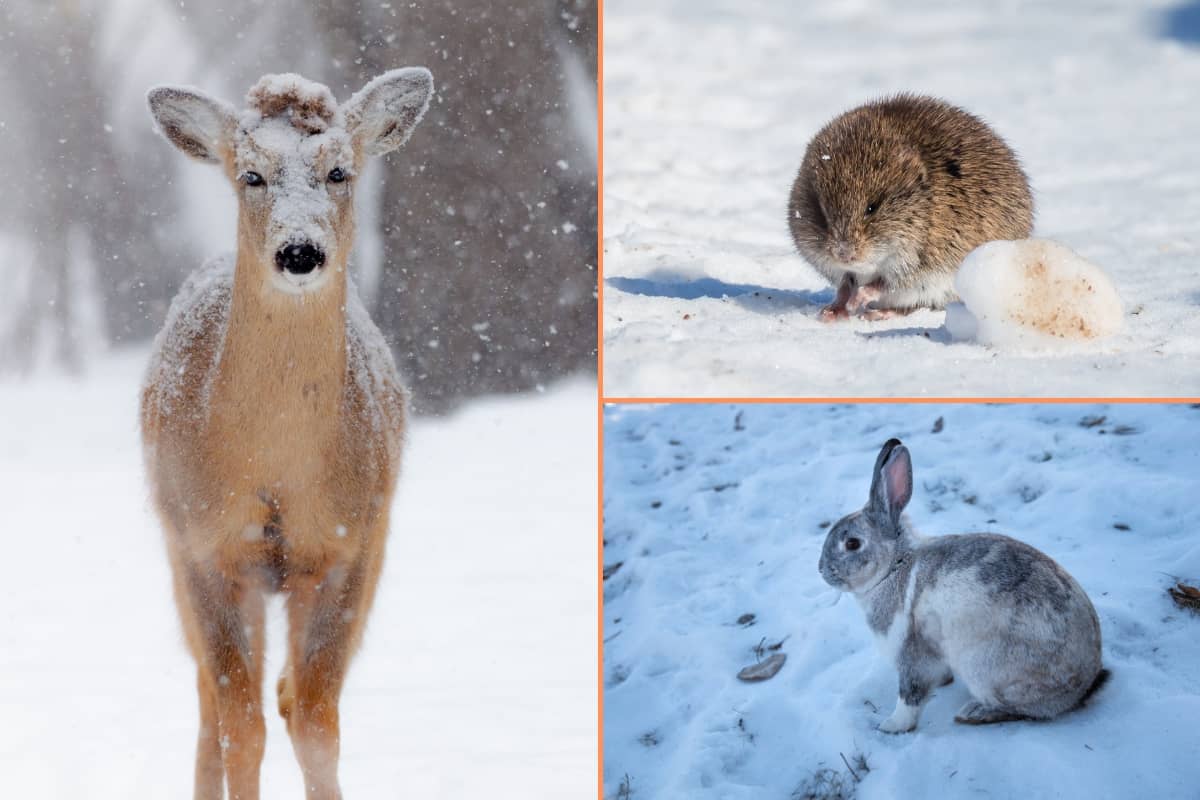
Like the coyote, some other animals also do a lot of activities in the winter rather than hibernation. These animals usually conserve their energy by getting a lot of fat and protein before the start of the winter months. The most prominent animals among these are voles, rabbits, mice, beavers, squirrels, deer, etc. These are the same animals on which the coyote prey. That’s why coyotes can easily survive in the winter as they have an abundant source of food. The metabolism rate of the coyote also remains the same in the winter month.
How does a juvenile coyote survive in the winter?
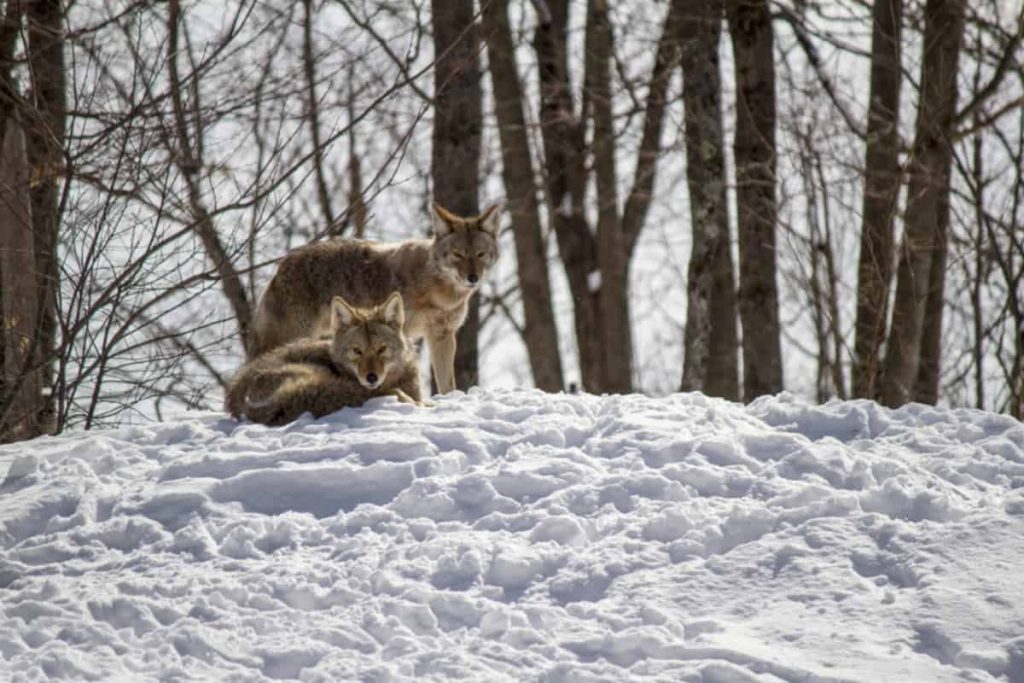
Adult coyotes might survive in the winter month easily due to their thick coat and warm fur layers. However, it might be extremely difficult for the juvenile or young coyote to survive in this harsh weather. Young coyote doesn’t have enough body fat and thick coat for winter. That’s why adult coyote always keeps their juvenile children close to their body to provide them with enough warmth in the winter.
An adult coyote also doesn’t let this young coyote out for food and arranges their food for itself. They hunt more than their usual needs in the winter months. Coyotes can easily increase the quantity of their food because they hunt in a pack or social groups.
Does coyote sleep all winter?
No, coyotes don’t sleep in the winter. These animals can easily survive the cold or harsh weather of the winter. There is no need to sleep or hibernate. The month of the winter for the coyote is the same as any other month of the year. The thick coat and extraordinary fur keep them safe from the breezes of the winter months. The coyote might sleep if there is a lot of snow in the surrounding areas of their home territory.
Conclusion
Hibernation is a very important aspect of any animal’s life. Most animals do hibernate in the winter months as they could not survive this harsh and cold weather. A coyote is not one of these animals. Coyote has a thick coat and highly sustainable double-layered fur which doesn’t let the heat transfer from their body. Moreover, coyotes are also highly adaptable to various kinds of environments and other conditions. These animals can shift their home territory and change their dietary patterns quite easily. Thus, they need to worry about the warmness in their home and about the sources of their food. That’s why these wild animals can easily survive in the winter and don’t hibernate.

Izzy is an experienced ranch worker who has a passion for exploring nature and getting up close to wildlife. With her connections to various animal organizations, Izzy is well-versed in animal care and rehabilitation.


